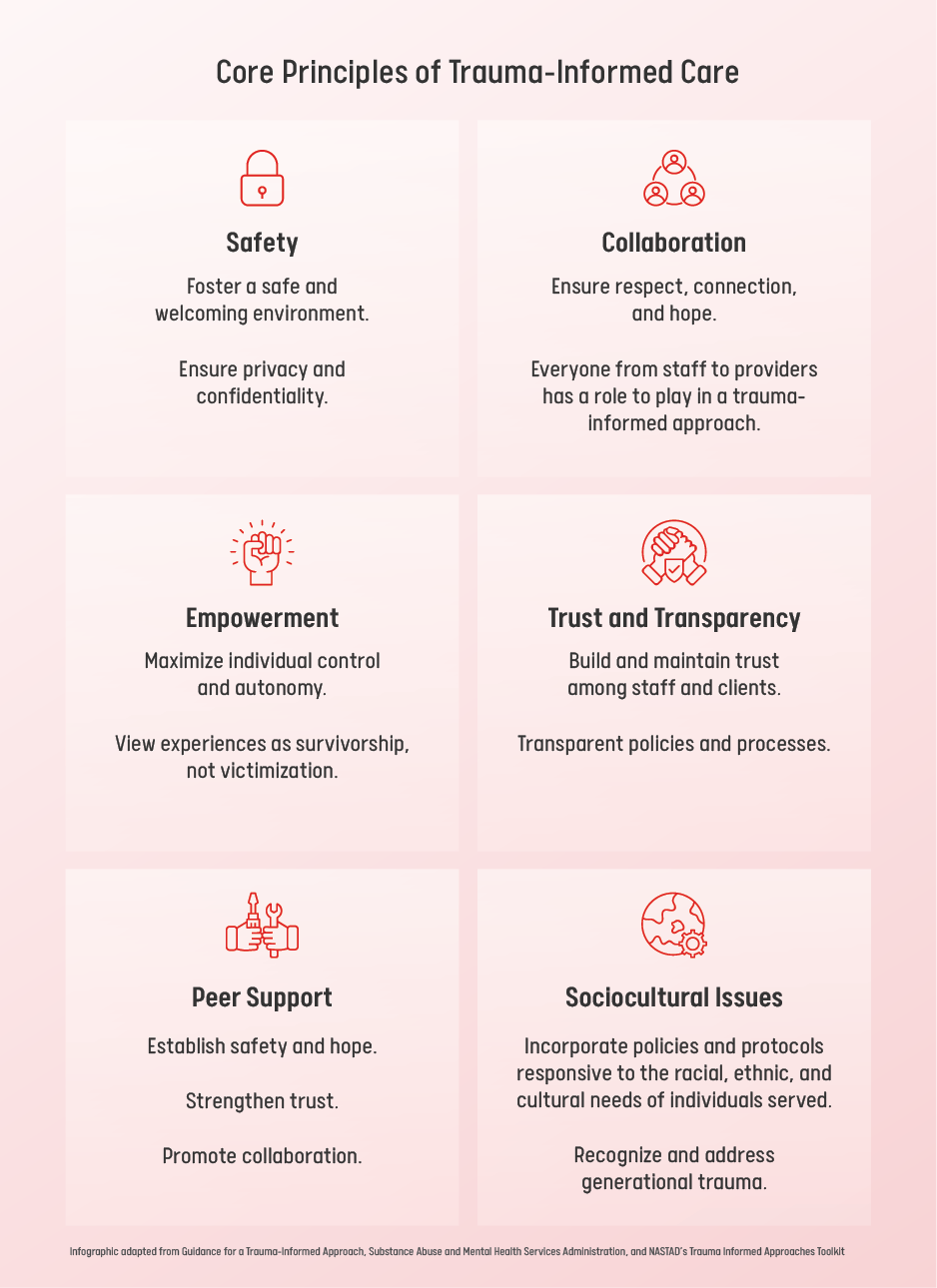Foundational Concepts
Introduction to Sexual Health and Wellness
Health Equity1
Health equity can be defined as the absence of systematic disparities in health and its determinants between groups of people at different levels of social advantage.
To attain health equity means to close the gap in health between populations that have different levels of wealth, power, and/or social prestige. For example, low-income persons and racial/ethnic minorities generally have poorer health relative to people who have more economic resources or who are members of more powerful and privileged racial groups.
Health equity falls under the umbrella of social justice, which refers to the equitable allocation of resources in society.
Eliminating health disparities and health inequities between racial and ethnic populations moves us toward our goal of health equity and social justice.
A significant focus of this effort is to address social determinants of health that influence our priority public health outcomes.
Stigma

HIV stigma refers to negative attitudes and beliefs about people living with HIV, people at risk for acquiring HIV, or people seeking HIV prevention services.
Some examples of HIV-related stigma include:
Believing that only certain people can get HIV.
The perception that people living with HIV and HIV-negative individuals seeking prevention tools (like PrEP) engage in irresponsible or reckless behavior.
The belief that people “deserve” to get HIV because of their behavior.
What is Internalized Stigma for People with HIV?
When a person with HIV experiences negative feelings or thoughts about themselves due to their HIV status.
Almost 8 in 10 adults with HIV receiving HIV medical care in the United States report feeling internalized HIV-related stigma.2
Internalized stigma can lead to depression, isolation, and feelings of shame, and can affect individuals’ ability to stay adherent to their HIV medication or stay engaged in care.2
What is Discrimination?
The act of treating people living with HIV differently than people who have not been diagnosed with HIV.
Some examples of this include:
Healthcare professionals refusing services to persons seeking prevention or treatment services for HIV.
Employers denying job opportunities to job candidates living with HIV based on their diagnosis.
What Can I Do to Combat HIV Stigma?
Educate yourself and those close to you.
Speak up and correct myths and stereotypes.
Use supportive, people-first language when discussing HIV.
Provide/discuss PrEP with everyone, regardless of one’s perceived risk.
How Does HIV Stigma Impact Society?
Stigma around HIV can influence a person’s decision to learn their HIV status, seek treatment, and deter folks from talking openly about HIV with sexual or romantic partners.
HIV stigma impacts healthcare, criminalization, and care of individuals in the justice system, education, and family/community relationships.
A Guide to Talking About HIV
When talking about HIV, language matters. Certain words and language can be stigmatizing towards people living with HIV. For more information, check out CDC’s “A Guide to Talking About HIV” resource.3
| PROBLEMATIC WORDS/PHRASES | PREFERRED WORDS/PHRASES | WHY? |
|---|---|---|
| AIDS (when referring to the virus, HIV) | HIV, HIV and AIDS (when referring to both) | AIDS itself is not a condition. It is a range of conditions, or a syndrome, that occurs when a person’s immune system is weakened by the HIV virus. |
| To catch AIDS, To catch HIV, To pass on HIV | To be diagnosed with HIV, To acquire HIV, To transmit HIV | AIDS cannot be caught or transmitted. HIV can be transmitted, but it is not hereditary. |
| AIDS patient, HIV patient, Patient | Person living with AIDS | The term patient implies a constant state of illness that can be misleading or demoralizing |
Trauma-Informed Care
What is Trauma?
According to the Substance Abuse and Mental Health Services Administration, individual trauma is the result of “an event, series of events, or set of circumstances that is experienced by an individual as physically or emotionally harmful or life-threatening and that has lasting adverse effects on the individual’s functioning and mental, physical, social, emotional, or spiritual well-being”.4
Traumatic experiences can include:
Poverty
Childhood neglect
Physical, emotional, or sexual abuse
Singular or intersecting oppressions (i.e., racism, sexism, transphobia, homophobia, ableism, etc.)
Why is Discussing Trauma Important?
Research has shown that people who experience trauma develop various behavioral, mental health, and chronic physical health conditions.5,6
Issues such as substance use, and mental health conditions can all result from traumatic experiences.5
What is Trauma-Informed Care?
Trauma-informed care is an approach to providing care that acknowledges a patient’s life experiences, both past and present, as a way to provide competent healthcare services through a healing lens.
A trauma-informed care approach aims to:
Recognize signs and symptoms of trauma in patients, families, and staff
Develop policies, procedures, and practices that address trauma
Actively avoid re-traumatizing patients, families, and staff
Trauma-informed care shifts from the idea of “What’s wrong with you?” to “What happened to you?”
Trauma Informed Care for People Living with HIV
Applying a trauma-informed care approach among people living with HIV is a crucial component to ending the HIV epidemic in the United States.
Studies have shown that 95% of people in the U.S. living with HIV have experienced at least one traumatic stressor, and 64% are living with posttraumatic stress disorder.7
The HIV Continuum can be heavily impacted by both past and current traumatic experiences. This can greatly influence an individual’s vulnerability to HIV exposure, diagnosis, ability to be linked to and retained in care, and viral suppression.
For More:
SAMHSA’s “Trauma and Violence”
samhsa.gov/trauma-violence
Center for Health Care Strategies’ “Trauma Informed Care Resource Implementation Center”
traumainformedcare.chcs.org/what-is-trauma-informed-care
NASTAD’s Trauma-Informed Approaches Toolkit
nastad.org/sites/default/files/2021-12/PDF-Trauma-Informed-Approaches.pdf
CDC’s Foundations of Health Self-Guided Training
bit.ly/3XgMMD3
CDC’s Ways to Stop HIV Stigma and Discrimination Resources
cdc.gov/stophivtogether/hiv-stigma/ways-to-stop.html
Infographic adapted from
Guidance for a Trauma-Informed Approach, Substance Abuse and Mental Health Services Administration
store.samhsa.gov/sites/default/files/sma14-4884.pdf
and
NASTAD’s Trauma Informed Approaches Toolkit
nastad.org/trauma-informed-approaches-toolkit
References
1. Adapted from Michigan Department of Community Health’s Health Equity Roadmap, 2010.
michigan.gov/-/media/Project/Websites/mdhhs/Folder1/Folder55/Michigan_Health_Equity_Roadmap_English.pdf?rev=0f6c20c252aa4d51b0ee0e0b8d300ef5
2. Baugher, A. R., Beer, L., Fagan, J. L., Mattson, C. L., Freedman, M., Skarbinski, J., & Shouse, R. L. (2017). Prevalence of Internalized HIV-Related Stigma Among HIV-Infected Adults in Care, United States, 2011–2013. AIDS and Behavior, 21(9), 2600–2608.
doi.org/10.1007/s10461-017-1712-y
3. Centers for Disease Control and Prevention. A Guide to Talking About HIV. In Centers for Disease Control and Prevention. U.S. Department of Health and Human Services.
cdc.gov/stophivtogether/library/stop-hiv-stigma/fact-sheets/cdc-lsht-stigma-factsheet-language-guide.pdf
4. Huang, L., Flatow, R. Biggs, T., Afayee, S. , Smith, K., Clark, T., & Blake, M. Substance Abuse and Mental Health Services Administration. (2014). SAMHSA’s Concept of Trauma and Guidance for a Trauma-Informed Approach.
ncsacw.acf.hhs.gov/userfiles/files/SAMHSA_Trauma.pdf
5. Bodziak, K., Lothschutz, K., Pung, C., & Abraham, S. (2021). The effects of past trauma on current mental health. International Journal of Science and Research Methodology, 18(3), 140–155.
ijsrm.humanjournals.com/wp-content/uploads/2021/06/10.Kalyn-R.-Bodziak-Kylie-J.-Lothschutz-Caitlin-M.-Pung-Samuel-P.-Abraham.pdf
6. Schnurr, P. P., & Green, B. L. (Eds.). (2004). Trauma and health: Physical health consequences of exposure to extreme stress. American Psychological Association.
doi.org/10.1037/10723-000
7. Brown, M.J., Adeagbo, O. Trauma-Informed HIV Care Interventions: Towards a Holistic Approach. Curr HIV/
AIDS Rep 19, 177–183 (2022).
doi.org/10.1007/s11904-022-00603-3
8. Altarum Institute. Sexual Health and Your Patients: A Provider’s Guide. Washington, DC: Altarum Institute; 2016. Updated 2020.
nationalcoalitionforsexualhealth.org/tools/for-healthcare-providers/document/Provider-Guide_2021.pdf
